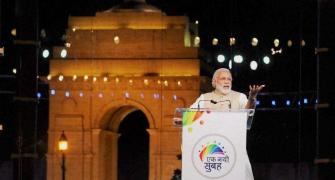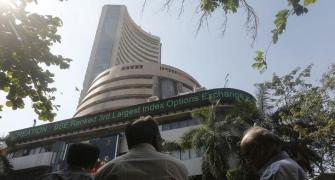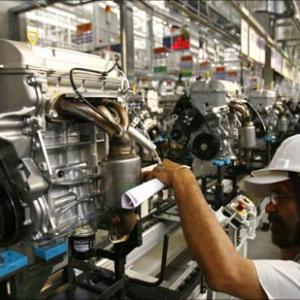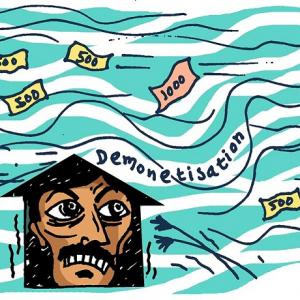 RE of GDP for 2015-16 show that the economy grew 7.9% in 2015-16, rather than the earlier estimate of 7.6 per cent.
RE of GDP for 2015-16 show that the economy grew 7.9% in 2015-16, rather than the earlier estimate of 7.6 per cent.
Revised Estimates of gross domestic product for 2015-16, released by the Central Statistics Office, show that the economy grew 7.9 per cent in 2015-16, rather than the earlier estimate of 7.6 per cent.
Gross value added (GVA), which excludes product taxes and subsidies, grew by an even bigger magnitude. GVA in 2015-16 is now estimated to have grown by 7.8 per cent, up from the earlier estimate of 7.2 per cent. What explains this sharp rise?
According to economists, these upward revisions in growth are largely a consequence of two factors.
First, RE are based on a much larger sample of companies than the earlier estimates. Thus, these estimates are more robust.
Second, in a few sectors, changes in the underlying deflator have led to wide variations in growth in real terms.
A sector-wise break-up shows that three sectors accounted for the bulk of the rise in value added. GVA by the mining sector is now estimated to have increased by 12.3 per cent in FY16, 4.9 percentage points higher than the earlier estimate of 7.4 per cent. Higher growth is also observed in the trade, transport and communications sectors as well as manufacturing.
The former’s growth has been scaled up by 1.7 percentage points, while the latter has grown by 1.3 percentage points higher than the previous estimate.
On the other hand, growth in value added in the electricity, gas and water supply sectors and the construction sector has been revised downwards by 1.5 and 1.1 percentage points, respectively.
Now, for the mining sector, RE show that in absolute terms, GVA at current prices is lower than what was estimated earlier. But at constant prices, it’s the other way around.
While the differences in current prices could be attributed to the use of updated information on activity in the sector, the sharp differences in constant prices stems from changes in the deflator.
“The deflator for mining for FY16 was mildly negative in the earlier data, and is more sharply negative in the new data. This is likely to reflect the considerable decline in prices of some commodities in FY16,” says Aditi Nayar, principal economist at ICRA.
For the manufacturing sector, GVA was revised upwards to 10.6 per cent in FY16, from the earlier estimate of 9.3 per cent. This higher growth can be largely attributed to the underlying data used by CSO to arrive at these estimates.
The Provisional Estimates rely on a smaller sample of companies, while RE have the luxury of being able to draw on information from a much larger set of companies, making the estimate more robust.
“The higher growth of manufacturing revealed by the revised data captures the improvement in earnings related to lower input costs. Moreover, it indicates the relatively high growth of the larger set of companies compared to the smaller sample studied previously, highlighting that early results may not be representative,” Nayar said.
Devendra Pant, chief economist at Ind-Ra, concurs.
“The numbers will further be revised to accurately reflect growth in the sector once estimates from the annual survey of industries are incorporated,” he adds.
On the other hand, the downward revision of economic activity in construction, electricity, gas, water supply & other utility services perhaps reflects overestimation in the earlier data. On the expenditure side, too, similar trends are observed.
Private final consumption expenditure (PFCE) is now estimated to have grown at current prices by 8.6 per cent in FY16, down from the earlier estimate of 12.3 per cent.
But in real terms, the difference between the two estimates is way smaller. In real terms, PFCE is now estimated to have grown at 7.3 per cent, marginally lower than the earlier estimate of 7.4 per cent.
This suggests two things. First, more updated information on expenditure has led to changes in absolute numbers. And second, the deflator for private final consumption expenditure is much smaller than previously estimated.
The case of gross fixed capital formation, which connotes investment in the economy, is even more curious.
In absolute terms, GFCF, has been lowered in FY14 and FY15 at current prices. As a consequence, the base against which growth for FY16 is measured is lower. This has resulted in higher growth in current prices — six per cent, up from the earlier estimate of 3.3 per cent.
In real terms, the estimates for GFCF in constant prices have been lowered for each of the years between FY13 and FY16, implying that the earlier forecasts were optimistic.
This is completely the opposite of RE of PFCE, where in absolute terms, PFCE at constant prices have been revised upward for each year from FY13 to FY16.
Perhaps as economists contend, the paucity of data is to blame for these sharp changes.
“The early estimates of the disaggregated expenditure components draw from available indicators, for instance, the capital goods component of the IIP for the machinery & equipment portion of GFCF. Subsequently, the revised data draw from a much richer array of information on capital spending by corporates, households and different tiers of government,” Nayar said.










